Bibliographic References Dynamo Reports n. 102 e 103
- Baldwin., R., di Mauro., B (ed) 2020 Mitigating the COVID economic crisis: act fast and do whatever it takes. A VoxEU.org Book. CEPR Press.
- Banco Central do Brasil, 2020 Relatório de Estabilidade Financeira, volume 19, número 1, abril 2020.
- Del Valle, S. e Mniszewski, S. 2013 Modeling the Impact of Behavior Changes on the Spread of Pandemic Influenza.
- Kissler, S. et al 2020 Projecting the transmission dynamics of SARS-CoV-2 through the postpandemic period. Science First Release 14apr.
- Krakauer, D. 2020 Rigorous Uncertainty. Santa Fe Institute Transmission Series ep. 1.
- Melgaço, J.G. et al 2020 Protective immunity after COVID-19 has been questioned: What can we do without SARS-CoV-2-IgG detection? Cellular Immunology, Volume 353, July 2020.
- Ministério da Saúde, 2020 Boletim Epidemiológico Especial COE-Covid n1 a 14.
- Tang, F. et al, 2001 Lack of Peripheral Memory B Cell Responses in Recovered Patients with Severe Acute Respiratory Syndrome: A Six-Year Follow-Up Study The Journal of Immunology 186:7264-7268; May 2011.
- Sethi, R. et al. 2020 Roadmap to Pandemic Resilience. Edmond J. Safra Center for Ethics at Harvard University.
- Wolpert., D. 2020 There’s no free lunch when it comes to making predictions about the COVID-19 pandemic. Santa Fe Institute Transmission Series n. 019
- World Health Organization, 2020 R&D Blueprint Covid-19 Experimental Treatments.
- World Health Organization, 2020 Novel coronavirus global research and innovation forum: towards a research roadmap.
- Tuckett., D. et al. 2020 Making good decision under uncertainty. Santa Fe Institute Transmission Series n. 023





